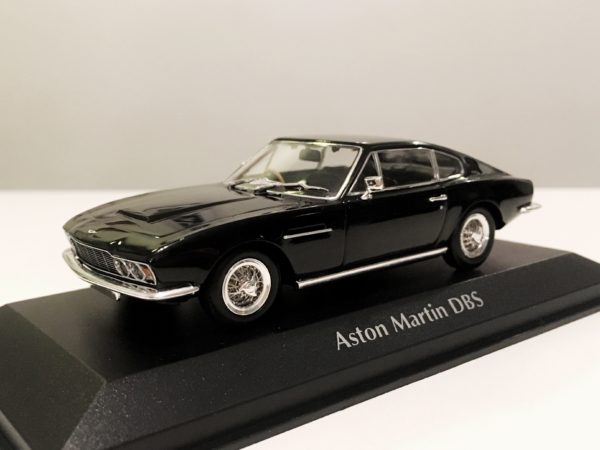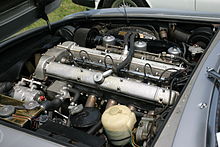
1:43 Maxichamps Black
Car Production 1967–1972
787 produced
Kirjeldus
DBS (1967–72)
The DBS was intended as the successor to the Aston Martin DB6, although the two ran concurrently for three years. Powered by a straight-six engine, it was produced from 1967 until 1972, eventually being phased out in favour of the Aston Martin V8.
It was a larger coupé than the DB6, with four full sized seats, but was powered by the same 4.0 L engine as the previous car. Claimed engine output was 280 bhp (209 kW; 284 PS),[3][4] but a vantage engine option used Italian made Weber carburettors, increasing output to an advertised 325 bhp (242 kW; 330 PS).[5]
In 1966, Touring of Milan was commissioned to design the DB6 replacement and produced two prototypes before the design house went out of business. William Towns was then hastily brought in to design the new car.[6] The DBS was intended to have a more “modern” look than the previous series of Aston models (the DB4 through DB6), and it incorporated a fastback style rear end and squared off front grille, atypical of Astons at the time, but very much then in vogue in automotive design circles of the late sixties. Trademark Aston design features, such as a bonnet scoop, knock off wire wheels, and side air vents with stainless steel brightwork were however retained. The DBS was the last Aston Martin to be built under David Brown‘s control.[5]
Specifications[3][4]
- Weight: 1,588 kg (3,501 lb)
- Engine: 3995 cc DOHC straight-6
- Power: 280 bhp (209 kW; 284 PS) at 4500 rpm
- Torque: 390.5 N⋅m (288.0 lb⋅ft) at 3850 rpm
https://en.wikipedia.org/wiki/Aston_Martin_DBS
| Teised | 1:43, Aston Martin |
